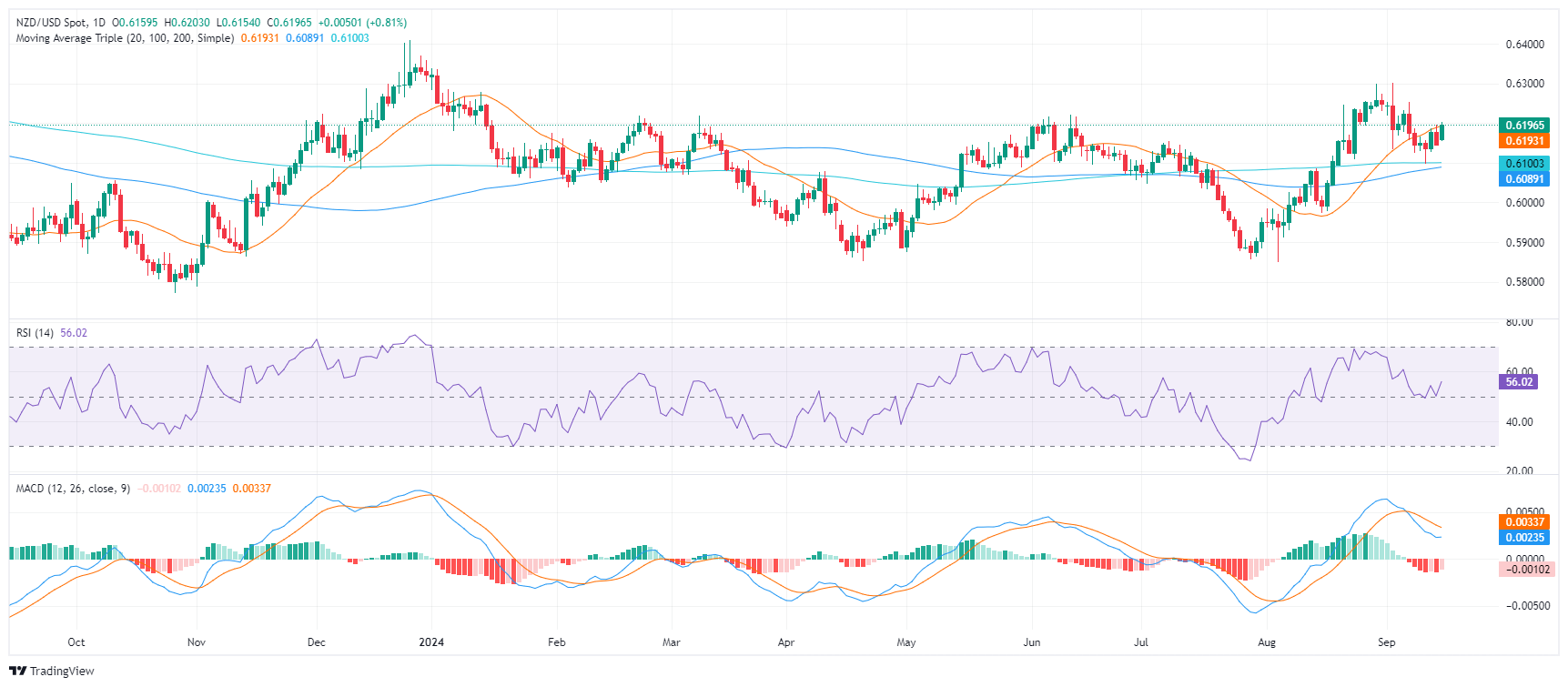NZD/USD Price Analysis: Bulls push back and attempt to regain the 20-day SMA
|
- The NZD/USD pair has been trading choppily within a range between 0.6120 and 0.6200 in the last sessions.
- The RSI is in positive territory with a rising slope, suggesting that buying pressure is increasing.
On Monday, the NZD/USD pair rose by 0.70% to 0.6200, as the bulls took control of the market. The pair has been trading choppily within a range between 0.6120 and 0.6200 in the last trading sessions. That being said, if the bulls gain the 20-day Simple Moving Average (SMA) consolidating above 0.6200, it could be considered a buy signal.
The Relative Strength Index (RSI) is currently at 56, which is in positive territory and has a rising slope, suggesting that the bulls are gaining momentum. However, the Moving Average Convergence Divergence (MACD) printed decreasing red bars, a sign of a potential reversal in the bearish momentum. This is aligned with the recent price action, which shows the bulls are pushing back.
NZD/USD daily chart
Key support levels to watch are 0.6120, 0.6140, and 0.6160, while resistance levels are 0.6200, 0.6220, and 0.6240. A consolidation above the 0.6200 area would put the pair back above the 20,100 and 200-days SMA which could trigger additional upward movements.
Information on these pages contains forward-looking statements that involve risks and uncertainties. Markets and instruments profiled on this page are for informational purposes only and should not in any way come across as a recommendation to buy or sell in these assets. You should do your own thorough research before making any investment decisions. FXStreet does not in any way guarantee that this information is free from mistakes, errors, or material misstatements. It also does not guarantee that this information is of a timely nature. Investing in Open Markets involves a great deal of risk, including the loss of all or a portion of your investment, as well as emotional distress. All risks, losses and costs associated with investing, including total loss of principal, are your responsibility. The views and opinions expressed in this article are those of the authors and do not necessarily reflect the official policy or position of FXStreet nor its advertisers.
